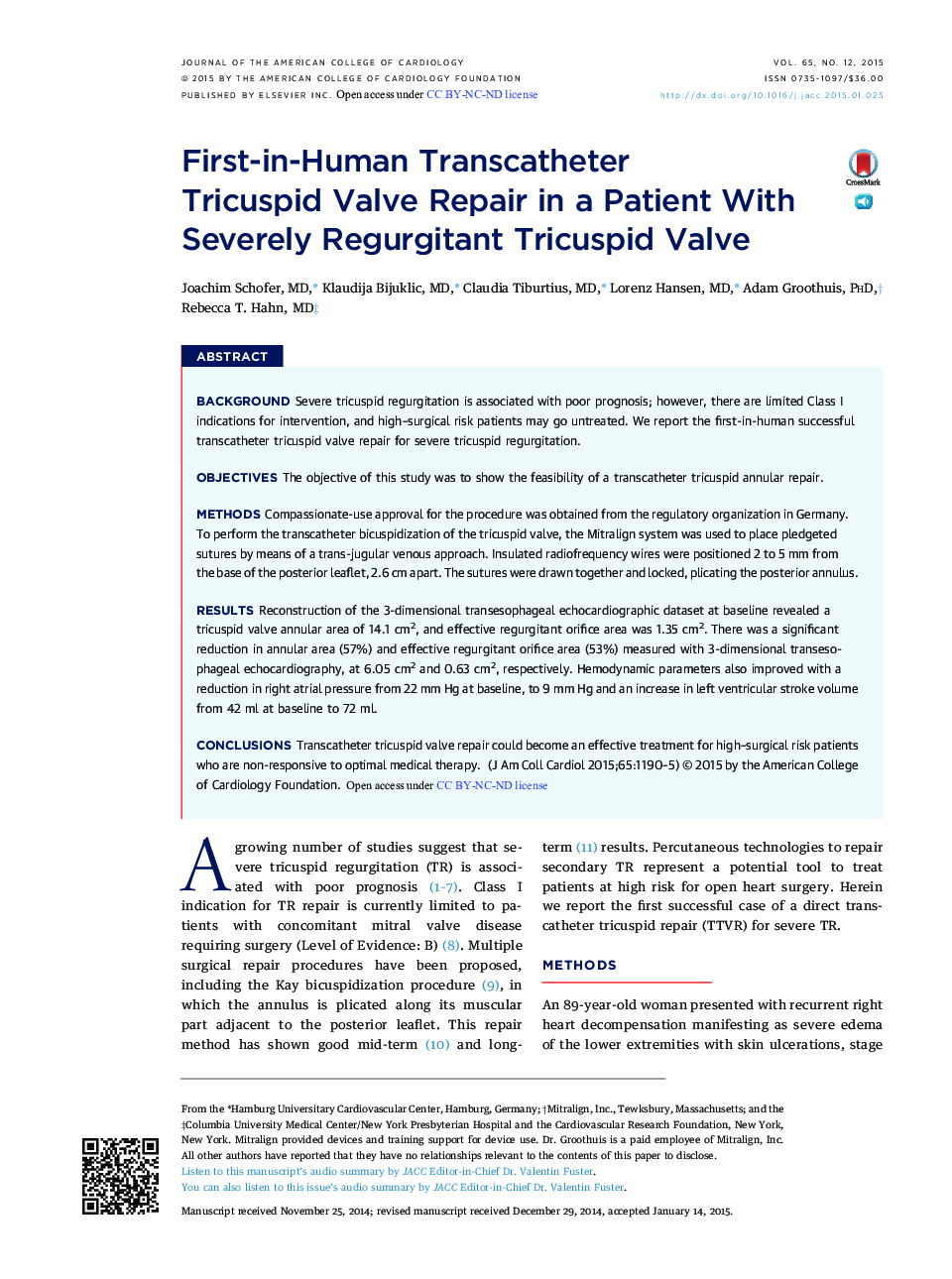| Article ID | Journal | Published Year | Pages | File Type |
|---|---|---|---|---|
| 5982496 | Journal of the American College of Cardiology | 2015 | 6 Pages |
BackgroundSevere tricuspid regurgitation is associated with poor prognosis; however, there are limited Class I indications for intervention, and high-surgical risk patients may go untreated. We report the first-in-human successful transcatheter tricuspid valve repair for severe tricuspid regurgitation.ObjectivesThe objective of this study was to show the feasibility of a transcatheter tricuspid annular repair.MethodsCompassionate-use approval for the procedure was obtained from the regulatory organization in Germany. To perform the transcatheter bicuspidization of the tricuspid valve, the Mitralign system was used to place pledgeted sutures by means of a trans-jugular venous approach. Insulated radiofrequency wires were positioned 2 to 5 mm from the base of the posterior leaflet, 2.6 cm apart. The sutures were drawn together and locked, plicating the posterior annulus.ResultsReconstruction of the 3-dimensional transesophageal echocardiographic dataset at baseline revealed a tricuspid valve annular area of 14.1 cm2, and effective regurgitant orifice area was 1.35 cm2. There was a significant reduction in annular area (57%) and effective regurgitant orifice area (53%) measured with 3-dimensional transesophageal echocardiography, at 6.05 cm2 and 0.63 cm2, respectively. Hemodynamic parameters also improved with a reduction in right atrial pressure from 22 mm Hg at baseline, to 9 mm Hg and an increase in left ventricular stroke volume from 42 ml at baseline to 72 ml.ConclusionsTranscatheter tricuspid valve repair could become an effective treatment for high-surgical risk patients who are non-responsive to optimal medical therapy.
